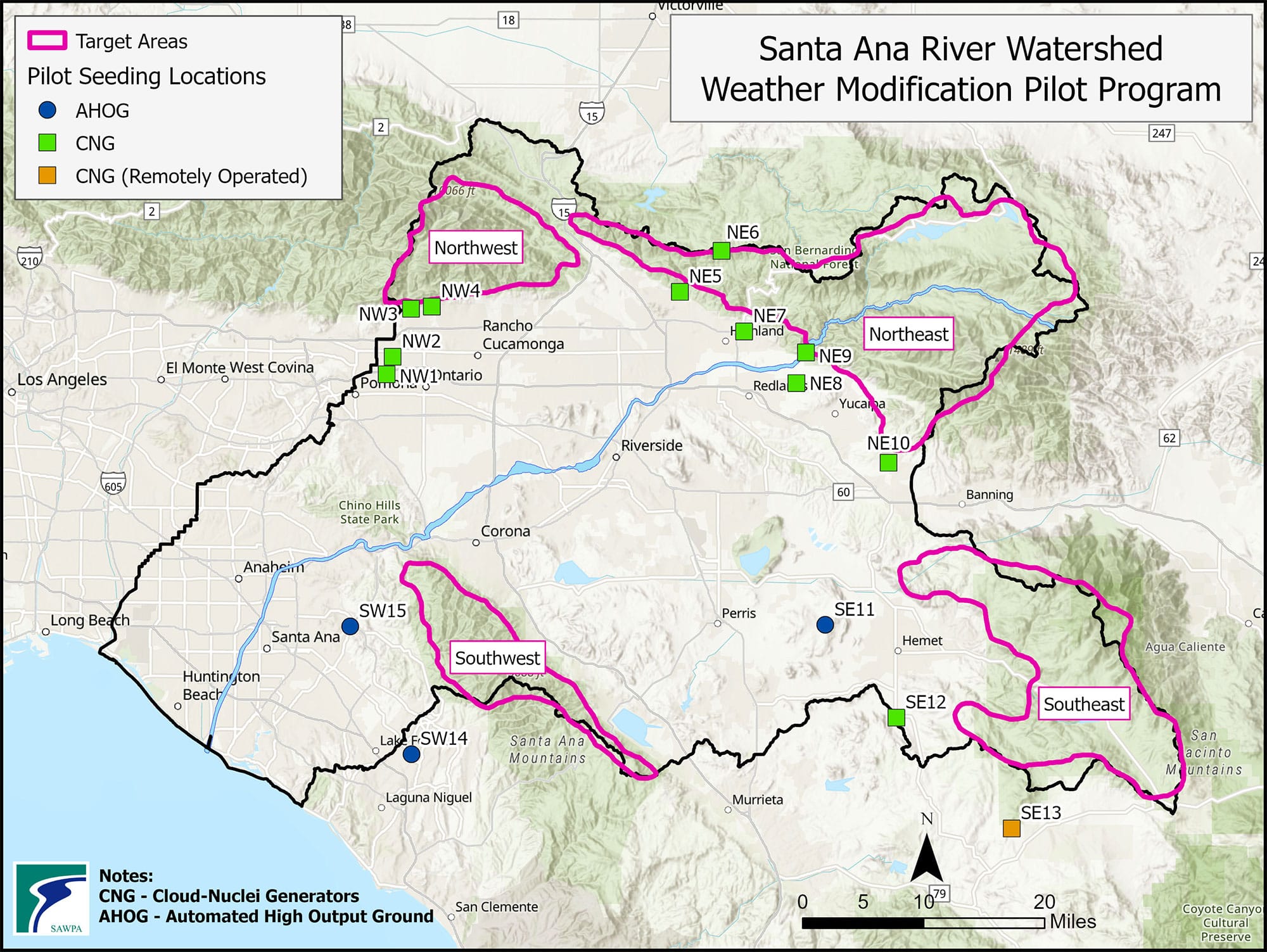A Real Corker
A prompt to encourage your practice of creativity this week from Riversider and local author Larry Burns.
A cloud seeding demonstration project, a first-of-its-kind in the area, is underway, promising Riverside a chance to significantly increase its water resources through engineered precipitation.

Many parts of Southern California depend significantly on imported water to meet the needs of urban, agricultural, and industrial users. In the case of my agency, Western Water, about 60 percent of the water served to our customers is imported. Local water agencies have done a good job of developing new local water supplies and reusing treated wastewater. They have also worked hard to assist their customers in using water more efficiently.
One technology that has been used in other parts of the state, country, and world for a long time is cloud seeding. The intent of cloud seeding is to increase the amount and sometimes the location of precipitation produced by storm clouds. The Santa Ana Watershed Project Authority (SAWPA) has kicked off a cloud seeding demonstration project in portions of Los Angeles, Orange, Riverside, and San Bernardino Counties. The process of cloud seeding is fairly simple, although deciding when and where to seed most effectively is complicated.
Cloud seeding works by releasing small particles into storm clouds. These particles provide a nucleus for water to condense around, forming snowflakes or raindrops depending on temperature. The most common way of doing this is to vaporize silver iodide particles with acetone. The silver iodide particles rise into the clouds from ground-based facilities or can be deposited directly into clouds by an aircraft. The SAWPA Demonstration project will use only ground-based particle generators.
A thorough environmental review of the project was conducted and showed no significant adverse environmental impacts of the project are anticipated. Acetone is a hazardous material, but it will be destroyed in the combustion process. Normal safe material handling and storage precautions will be taken with the raw acetone. Silver Iodide is composed of Silver and Iodine. Silver is a naturally occurring metal, and Iodine is commonly used in a variety of medical uses. The amount of any of these that will be used and that can make its way into the environment is very small and is not considered a threat.
SAWPA will seed only those storms that appear likely to produce precipitation and will not seed large atmospheric river-type storms that may already produce too much precipitation. Winter storms and increasing snowfall rather than rainfall will be targeted. Seeding will also not be done where increased precipitation is likely to fall on recent burn scars or other places where increased risk of landslide is a problem.
This map shows the location of ground-based particle generators and the target areas where increased precipitation is anticipated to occur. The Seeding location notations on the map show two types of particle generators. AHOG is Automatic High Output Ground Seeding, which, as the name implies, produces a larger volume of particles, and CNG is Cloud Nuclei Generator. Both operate on the same basic principle. It is anticipated that cloud seeding can increase precipitation in the target areas by 5 to 15%.

The SAWPA cloud seeding demonstration project is a four-year project. It began seeding last November and will go through the winter of 2026-27. Historic snowpack and streamflow data will be compared to measured snowpack and streamflow during the demonstration to help document whether cloud seeding has a beneficial effect. The project also has a validation component where a second contractor will take snow samples after cloud seeding events and sample for silver in the snow to demonstrate whether the cloud seeding contributed to the snowfall. The amount of silver in the snow is so minute that the personnel taking the samples must wear cleanroom-type clothing and use sterilized equipment to avoid contamination of the collected samples.
Cloud seeding is not a new technology, but its effectiveness in our local climate is not certain. Some believe it will be effective; others believe it will not be effective, or at least not cost-effective. The intent of this project is to demonstrate the effectiveness of informing future decisions on larger-scale cloud seeding projects as part of water agency supply portfolios and potentially to help decide whether aircraft-borne seeding might make sense here. Airborne seeding gives greater precision of application but is significantly more expensive than ground-emitting generators.
Let us email you Riverside's news and events every morning. For free!